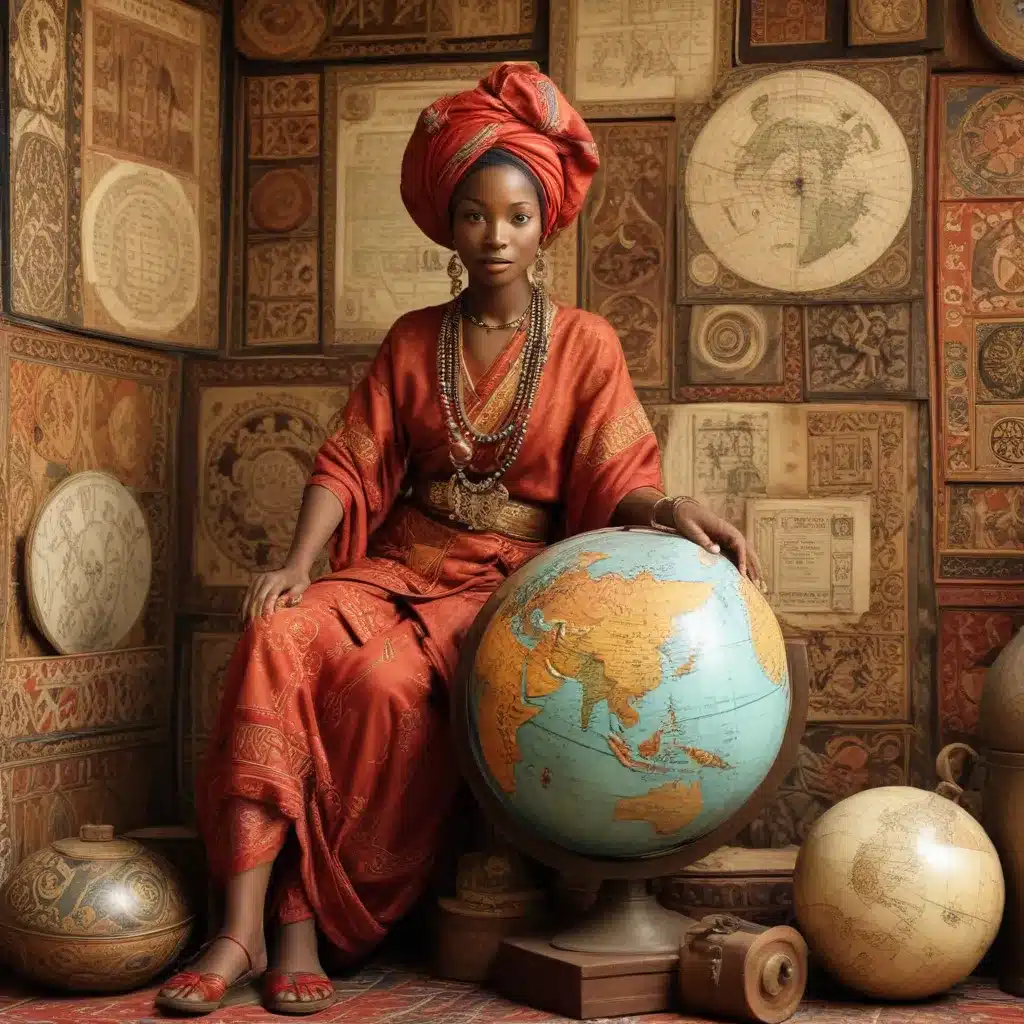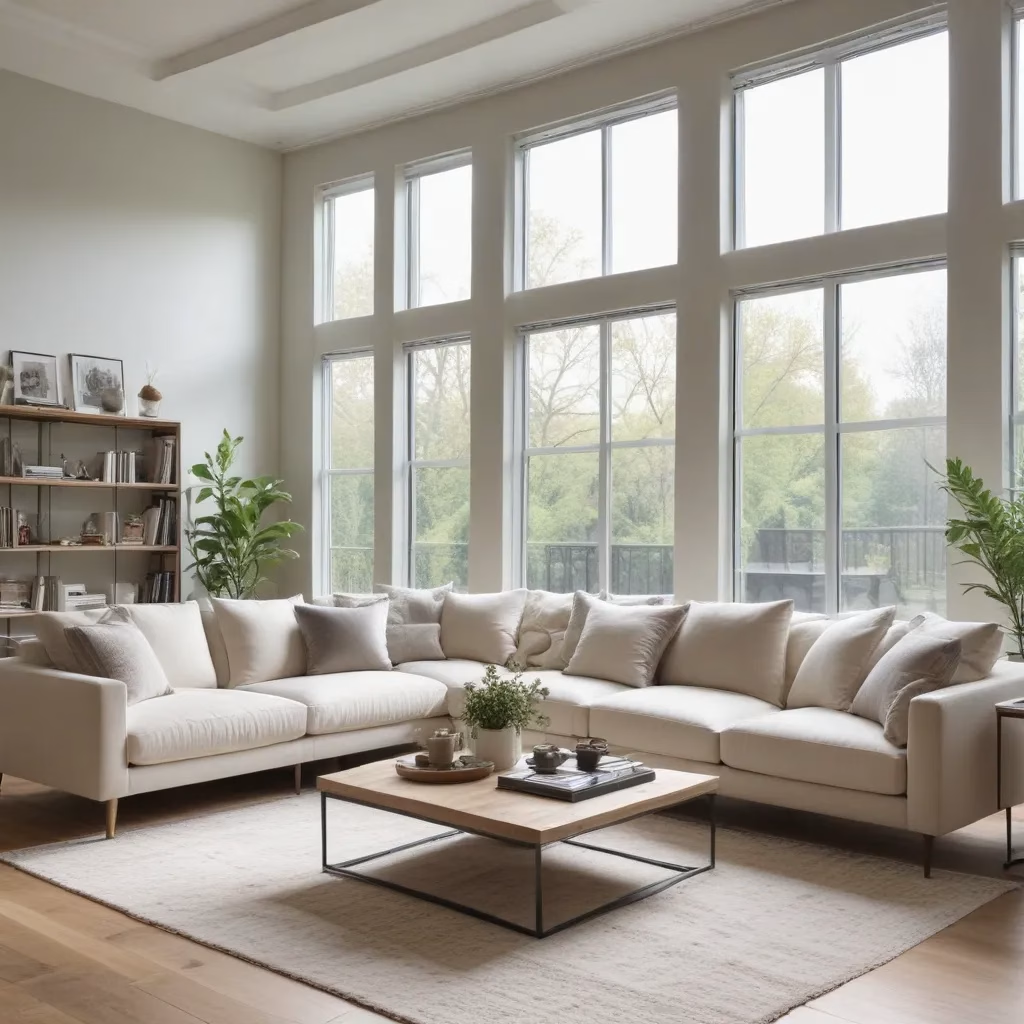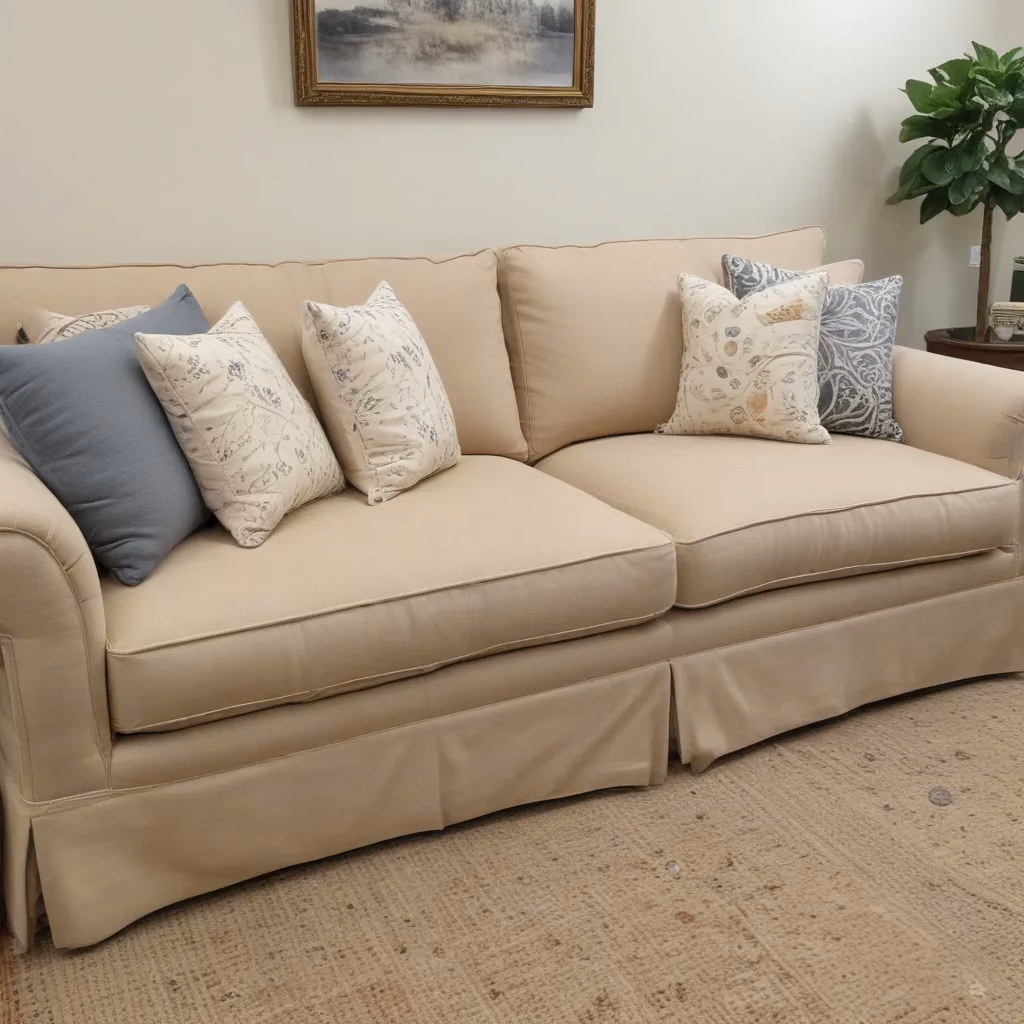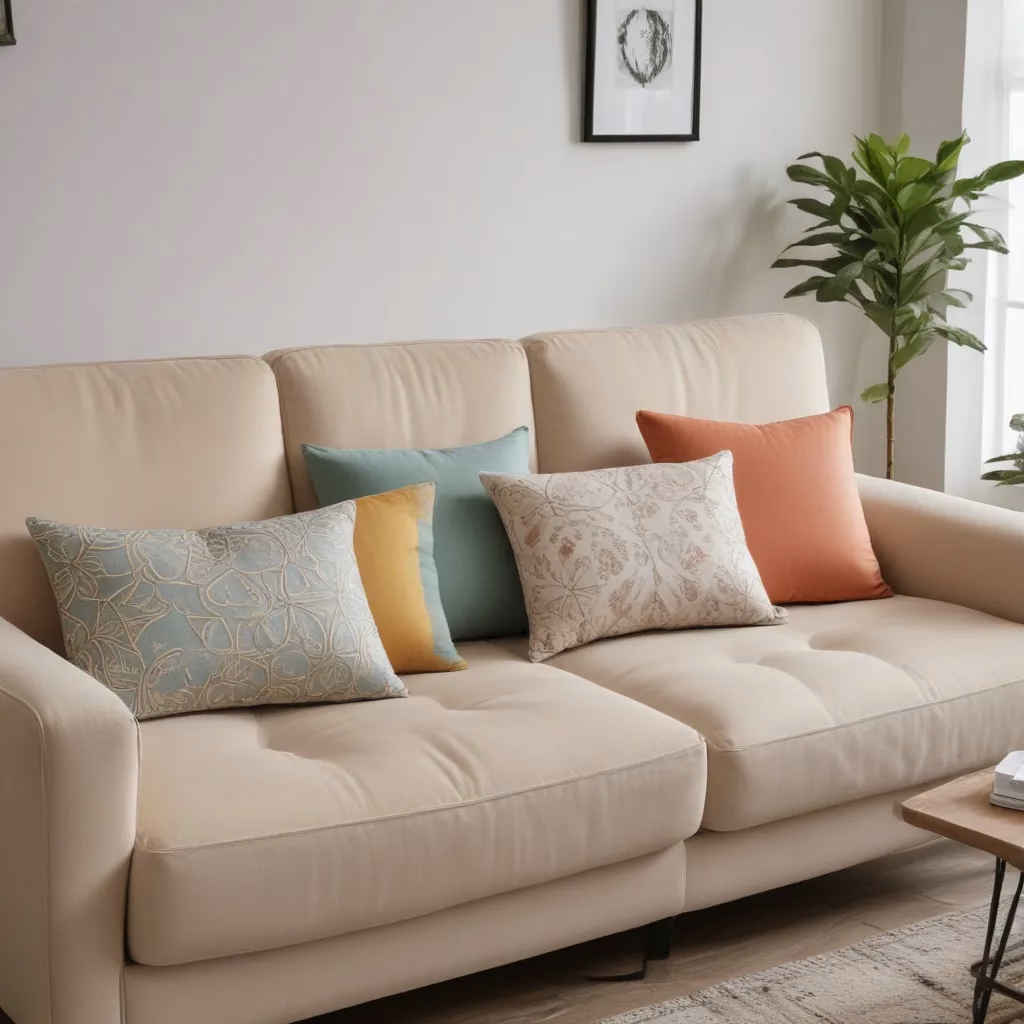
The Art of Blending International Designs
As a furniture specialist who has had the privilege of working with clients from diverse cultural backgrounds, I’ve seen firsthand how global influences can transform living spaces. The beauty of incorporating worldly elements into your home lies in the rich tapestry of styles, colors, and textures that can be woven together to create a truly unique ambiance.
When selecting sofas and other furniture pieces with multicultural motifs, it’s essential to consider the overall harmony of your space. I often advise my clients to start with a neutral base and then layer in elements from different cultures. For instance, a classic English roll-arm sofa can serve as an excellent canvas for vibrant throw pillows featuring Indian block prints or Moroccan-inspired geometric patterns.
One of my favorite projects involved working with a family who had lived in several countries. We created a living room that told the story of their travels through carefully chosen furniture and accessories. The centerpiece was a generously proportioned sectional sofa upholstered in a rich, earthy leather—a nod to their time in Argentina. We complemented this with side tables crafted from reclaimed teak, reminiscent of their years in Southeast Asia, and adorned the walls with a mix of African masks and Japanese woodblock prints.
Embracing Texture and Pattern in Upholstery
When it comes to upholstery, the world is truly your oyster. Global design influences offer an array of exciting textures and patterns that can breathe life into any sofa. I’ve found that mixing textures is key to creating depth and interest in a room with multicultural flair.
Consider pairing a smooth, silk-like fabric on your main sofa with accent chairs upholstered in a nubby, handwoven textile. This contrast not only adds visual interest but also invites touch, making your space more inviting and tactile. I once worked on a project where we covered a sleek, modern sofa in a sumptuous velvet inspired by traditional Indian saris. The juxtaposition of contemporary form with a centuries-old fabric technique was stunning.
Patterns, too, play a crucial role in bringing global influences into your home. Ikat prints from Central Asia, suzani embroideries from Uzbekistan, or bold African wax prints can all make striking statements on sofas and throw pillows. However, it’s important to balance these strong patterns with solid colors to avoid overwhelming the eye. A tip I often share is to use the 60-30-10 rule: 60% of your upholstery in a solid or subtle texture, 30% in a complementary pattern, and 10% in an accent pattern or color.
The Importance of Quality and Craftsmanship
As we look to incorporate global styles into our homes, it’s crucial not to overlook the importance of quality and craftsmanship. Many traditional furniture-making techniques from around the world have been honed over generations, resulting in pieces that are not only beautiful but also built to last.
I always encourage my clients to invest in well-made furniture, especially when it comes to sofas. A high-quality sofa frame, constructed using time-honored joinery techniques, will provide a stable foundation for years to come. Look for hardwood frames with corner blocks and reinforced joints. These construction methods are often found in antique pieces from various cultures and have stood the test of time.
When selecting upholstery fabrics, consider natural fibers that are both durable and reflective of global textile traditions. Wool, cotton, linen, and silk have been used across cultures for centuries and often age beautifully. I remember working with a client who fell in love with a handwoven wool fabric from Peru. We used it to upholster a pair of armchairs, and years later, they still look magnificent—developing a rich patina that tells the story of their use and care.
Balancing Form and Function
While the allure of global design can be strong, it’s essential to remember that your furniture should still serve its primary purpose—to provide comfort and functionality in your home. This is where the expertise of a furniture specialist can be invaluable in helping you strike the right balance.
I always advise my clients to consider their lifestyle when selecting furniture with worldly influences. A low-slung floor cushion seating arrangement might look stunning and evoke memories of Moroccan riads, but it may not be practical for everyone. Instead, we might opt for a more traditional sofa height but incorporate Moroccan-inspired patterns in the upholstery or accent pieces.
Similarly, while an intricately carved wooden sofa from India might be a showstopper, it may not provide the level of comfort needed for everyday use. In such cases, I suggest using these beautiful pieces as accents—perhaps as a statement bench in an entryway—and choosing more ergonomic seating for primary living areas.
Mixing Old and New for a Timeless Look
One of the most exciting aspects of working with global design influences is the opportunity to mix old and new elements. This approach not only creates a visually interesting space but also allows for a more sustainable approach to decorating.
I often encourage clients to consider vintage or antique pieces when looking to add worldly flair to their homes. These items bring with them a sense of history and authenticity that can’t be replicated. For example, an antique Chinese cabinet can make a stunning media console when paired with a contemporary sofa.
However, it’s important to balance these older pieces with modern elements to keep the space feeling fresh and livable. I worked with a couple who had inherited a beautiful set of carved Indian doors. We repurposed them as a dramatic headboard in their bedroom, pairing them with crisp, white bedding and sleek, modern nightstands. The result was a perfect blend of old-world charm and contemporary comfort.
Color Theory in Global Design
Understanding and applying color theory is crucial when working with multicultural motifs. Different cultures often have unique associations with colors, and these can be used to create powerful visual statements in your home.
In my experience, one effective approach is to choose a color palette inspired by a specific region or culture and then use that as a thread to tie various elements together. For instance, the warm earth tones of the Southwestern United States—terracotta, sage green, and deep blue—can be beautifully incorporated into a living room through the sofa upholstery, accent pillows, and artwork.
I once worked on a project where the client was passionate about Japanese design. We used a palette inspired by traditional Japanese indigo dyeing, incorporating various shades of blue alongside neutral tones. The result was a serene and cohesive space that subtly referenced Japanese aesthetics without feeling themed or cliché.
It’s also worth noting that many global design traditions embrace bold color combinations that might seem daring to Western eyes. Don’t be afraid to experiment with these vibrant palettes—they can bring energy and joy to your space. Just be sure to balance bold colors with neutral elements to create visual rest points.
Sustainable Practices in Global Furniture Design
As a furniture specialist, I’ve noticed a growing interest in sustainable practices within the industry, particularly when it comes to global design influences. Many traditional furniture-making techniques from around the world are inherently sustainable, using local materials and time-honored craftsmanship.
When incorporating global elements into your home, consider looking for pieces made using sustainable materials and ethical production methods. For example, many artisans in developing countries are now combining traditional techniques with eco-friendly materials like bamboo or reclaimed wood.
I recently worked with a client who was passionate about sustainability. We sourced a beautiful sofa from a company that works directly with artisans in India, ensuring fair wages and using sustainably harvested hardwoods. The piece not only looked stunning but also aligned with the client’s values.
Remember, sustainability isn’t just about materials—it’s also about longevity. Choosing well-made pieces inspired by global design traditions often means investing in furniture that will last for generations, reducing the need for frequent replacements.
Accessorizing with Global Flair
While sofas and larger furniture pieces form the foundation of a room, accessories play a crucial role in bringing global influences to life. These smaller items allow you to experiment with different cultural elements without committing to a complete overhaul of your space.
Textiles are an excellent way to introduce worldly touches. Consider draping a colorful suzani from Uzbekistan over the back of your sofa or layering Moroccan kilim pillows on a neutral chair. These textiles not only add visual interest but also bring a sense of warmth and history to your space.
Artwork is another powerful tool for incorporating global influences. I often advise clients to mix pieces from different cultures for a truly eclectic look. For instance, you might pair a large-scale photograph of African landscapes with smaller framed prints of Japanese woodblock art.
Don’t forget about lighting! Pendant lights inspired by Moroccan lanterns or table lamps featuring Indian block-printed shades can add both ambient light and cultural flair to your room.
The Role of Personal Experience in Global Design
One of the most rewarding aspects of incorporating global influences into home design is the opportunity to reflect personal experiences and travels. I always encourage my clients to think about the places they’ve visited or the cultures that resonate with them when making design choices.
For example, I once worked with a couple who had spent their honeymoon in Bali. We designed their living room around a stunning hand-carved Balinese daybed, which we used as a unique coffee table. Paired with a comfortable, modern sofa and accented with batik throw pillows, the space became a daily reminder of their special trip.
However, it’s important to strike a balance between personal mementos and overall design coherence. Too many disparate elements can make a space feel cluttered or disjointed. I often suggest choosing one or two key pieces that hold special meaning and building the room’s design around them.
Remember, the goal is to create a space that feels personal and lived-in, not a replica of a hotel room or a museum exhibit. The best globally inspired interiors are those that tell your unique story through a thoughtful curation of furniture and accessories.
Adapting Global Trends to Local Contexts
While it’s exciting to incorporate design elements from around the world, it’s equally important to consider how these global influences can be adapted to fit local contexts and personal needs. This is where the expertise of a furniture specialist can be particularly valuable.
For instance, while low seating might be common in many parts of Asia, it may not be suitable for all clients, especially those with mobility issues. In such cases, we might take inspiration from the aesthetic of low seating—perhaps using low-backed sofas or incorporating floor cushions as optional additional seating—while maintaining a more standard seat height for the main furniture pieces.
Similarly, while ornate carvings might be a hallmark of certain global styles, they may not be practical in homes with young children or pets. In these situations, we might incorporate the essence of these designs through printed fabrics or more subtle decorative elements.
The key is to understand the principles behind different global design traditions and find creative ways to apply them that are both beautiful and functional for your specific lifestyle and local environment.
The Future of Global Design in Home Furnishings
As our world becomes increasingly interconnected, I believe we’ll continue to see a rich cross-pollination of design ideas from different cultures. This trend towards global influences in home furnishings is more than just a passing fad—it reflects a broader shift towards cultural appreciation and diversity in our living spaces.
Looking ahead, I anticipate we’ll see more collaborations between international designers and local artisans, resulting in furniture pieces that blend traditional craftsmanship with contemporary aesthetics. We’re already seeing this with companies that work directly with artisans around the world to create unique, ethically produced pieces.
Technology will also play a role in shaping the future of global design. Virtual reality and augmented reality tools are making it easier for clients to visualize how different cultural elements might work in their spaces. These technologies allow for more experimentation and can help people feel more confident in incorporating bold, globally-inspired choices into their homes.
As we move forward, I believe the most successful globally-inspired interiors will be those that thoughtfully curate elements from different cultures, creating spaces that are at once worldly and deeply personal. The goal is not to recreate a specific cultural aesthetic, but to draw inspiration from the rich tapestry of global design to create homes that are unique, meaningful, and truly reflective of the individuals who live in them.
In conclusion, the world of global design offers endless possibilities for creating beautiful, personalized living spaces. Whether you’re drawn to the minimalist aesthetics of Scandinavian design, the rich patterns of North African textiles, or the warm woods of Southeast Asian furniture, there’s a world of inspiration waiting to be explored. As a furniture specialist, I’m excited to continue guiding clients through this journey of global discovery, helping them create homes that are not just visually stunning, but also deeply meaningful and comfortable.
For more inspiration and expert advice on incorporating global design elements into your home, visit Sofa Spectacular. Our team of specialists is always ready to help you bring your vision of a globally-inspired home to life.



